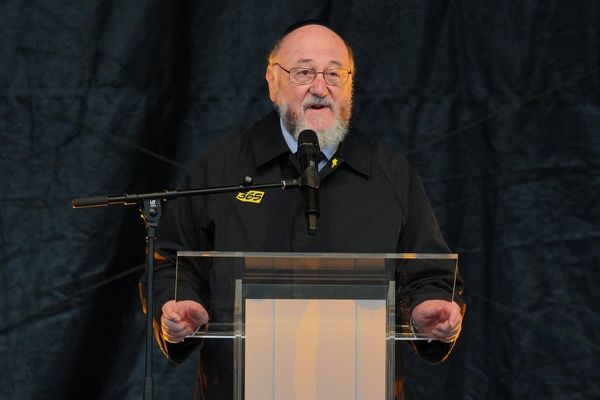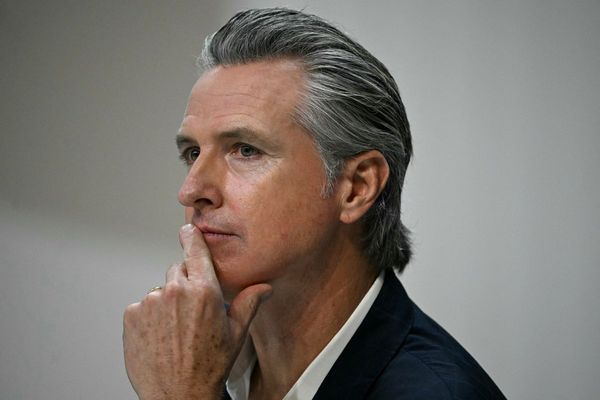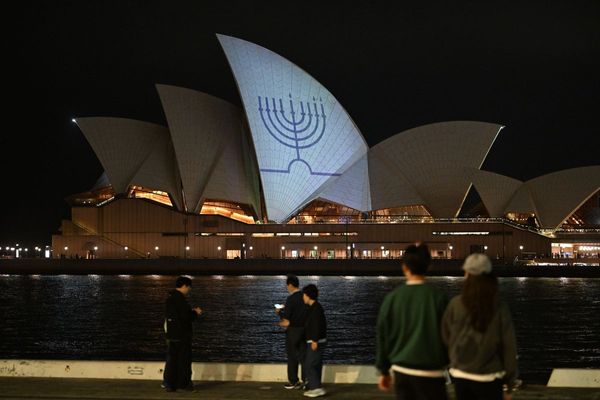“There’s no such thing as right and wrong,” a storyteller reveals, at the opening of the fourth season of Netflix’s The Witcher. He is telling old stories of Geralt of Rivia, the fabled monster-hunter whose long blond locks and iron jaw were first depicted by Henry Cavill, but now, in a strange mid-series twist, belong to Liam Hemsworth. It seems inevitable then – whether it’s right or wrong, good or bad – that all the conversation about this penultimate instalment in the saga will focus on this eye-catching casting decision.
At the heart of The Witcher is its makeshift family: Geralt (Hemsworth) and Yennefer (Anya Chalotra), bound together by love and destiny, and their adopted charge, Ciri (Freya Allen), a princess on the run. But the path to domestic bliss never runs smooth. Ciri is lost, renamed Falka, and abandoned to a group of sneak thieves known as the Rats. “Always lost, never found,” she laments to her new friends. “That’s my story.” But the search for her continues apace, and Geralt is assembling a ragtag squad intended upon her recovery. That leaves Yennefer to stare down the evil Vilgefortz (Mahesh Jadu), who is slaughtering Mages and has his eye on Ciri’s Elder Blood, the historical magic that runs in her veins and makes her so powerful – and wanted.
The Witcher has always been a tangle of plots and subplots, quests and side quests. Based on Andrzej Sapkowski’s books, its popularity owes a huge debt to the mid-noughties video game adaptation. These double loyalties give the show a vast range of characters to introduce and storylines to explore. Fan favourites – like kindly vampire/“stinking herbalist” Emiel Regis (Laurence Fishburne) – have been withheld until this fourth series, while Ciri’s time with the Rats unlocks opportunities to explore her burgeoning adulthood. So, the braided narrative just about keeps its momentum, moving inexorably towards a final confrontation with Vilgefortz, and an ultimate reunion of our central trio.
But nobody is really interested in where The Witcher’s messy plot is going in this fourth season. There’s only one question on everyone’s mind: how does Liam Hemsworth fare as Geralt? The decision to replace Henry Cavill was an odd one. Cavill was the best thing about the show and had long been a champion for adapting Sapkowski’s work. The departure was apparently mutual, though rumours about on-set friction have swirled. Hemsworth is an intriguing replacement: he has the same leading-man good looks but softer features, and big, pleading eyes. His Geralt lacks either the physicality or emotional gravitas of Cavill’s, and his thinner voice (Cavill communicated only with a low growl) accentuates this difference. Giving Hemsworth all the grace in the world for stepping into such a difficult role, it’s impossible to avoid feeling like this is a huge downgrade.
That only serves to further the feeling that The Witcher is a busted flush. Almost all the high-fantasy franchises launched in the aftermath of Game of Thrones (including Amazon’s The Wheel of Time and Rings of Power, as well as Sky’s own Thrones spin-off, House of the Dragon) have struggled by comparison. The Witcher has endured – perhaps because of Netflix’s ubiquity and the player base of the game series – but has become increasingly hammy, more like Doctor Who than the sex and violence of Westeros. “Life is s*** and blood and death,” opines Ciri.
Yet the world of The Witcher feels oddly bloodless and mudless. It is shot in Netflix’s traditionally over-saturated colour palette, featuring characters with impeccable 21st-century make-up, and a range of accents that would make the UN General Assembly sound like a council meeting in Tunbridge Wells. Despite the apparent carte blanche offered to creator Lauren Schmidt Hissrich by Netflix, The Witcher still feels cheap – and, without Cavill, the limitations of the acting are exposed more than ever.
Netflix has already confirmed that the show’s fifth season will be its last. This fourth chapter feels like a tick-box exercise, helping the show limp towards its conclusion. But the series’s fans must be frustrated by the way the product has degraded in the years since its promising debut in 2019. No amount of imaginative swordplay or inventive creature design can prevent the sense that The Witcher is now what all sword and sorcery epics fear becoming: pure bilge.







